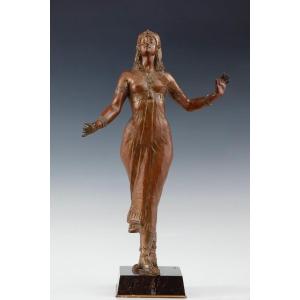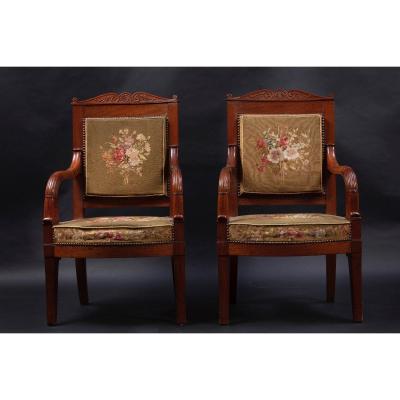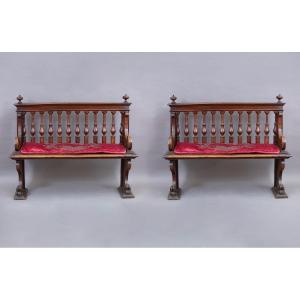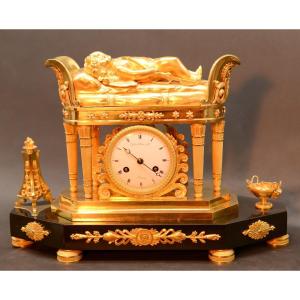The theme of this pendulum is Africa and is symbolized by the black huntress, carrying a bow and arrows, sitting on the dial; she is dressed in a finely chiseled gilded bronze feather skirt and is adorned with bracelets on her wrists and arms, an important double-row pearl necklace and anklets. Her eyes are enameled. The figure of the huntress is accompanied by a leopard on her right and a turtle on which she rests her left foot. The oval base is decorated with a row of pearls surmounted by a frieze of golden cupids that recall the themes of hunting, fishing and gathering; on the sides there are two garlands of flowers and fruit held by snakes and a faun mask. The preparatory drawing for this model of pendulum clock, deposited at the Cabinet des Estampes of the Bibliothèque Nationale de France in 1799, is by the French bronzesmith Jean-Simon Deverberie, one of the most important Parisian bronzesmiths of the late 18th century and the first two decades of the 19th. This model of pendulum clock was very successful and numerous versions were made by various French clockmakers: among these, a version preserved at the Musée des Arts Décoratifs in Paris and two preserved at the Duesberg Museum in Mons in Belgium.


































 Le Magazine de PROANTIC
Le Magazine de PROANTIC TRÉSORS Magazine
TRÉSORS Magazine Rivista Artiquariato
Rivista Artiquariato